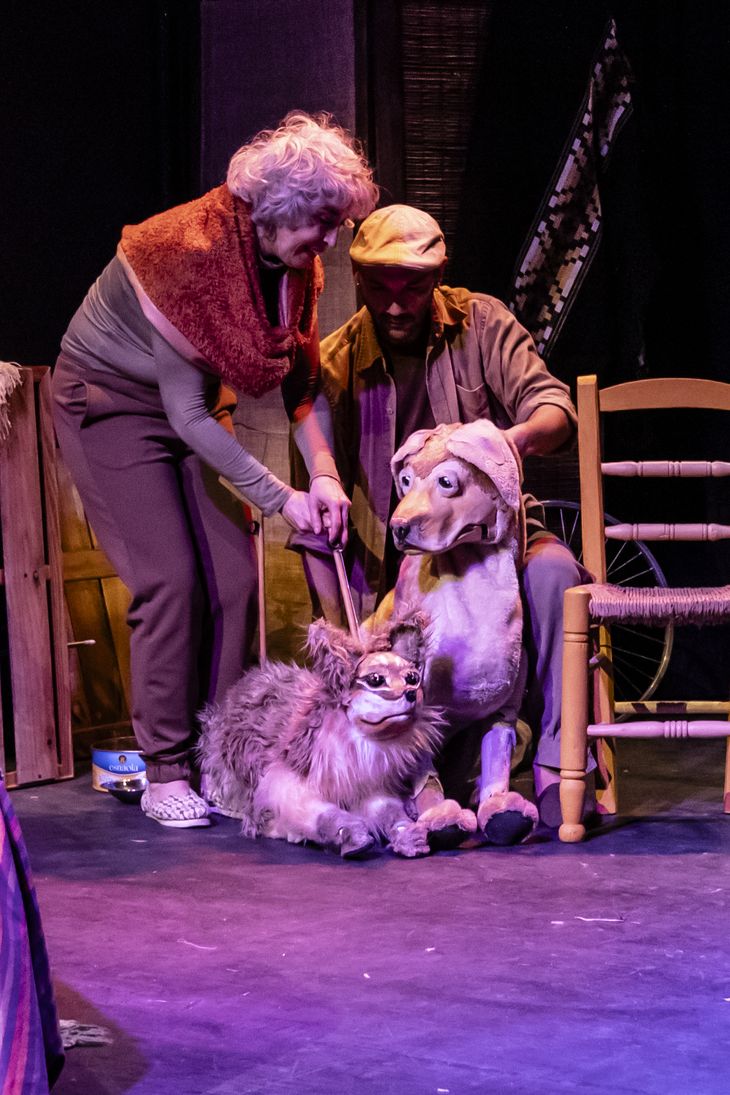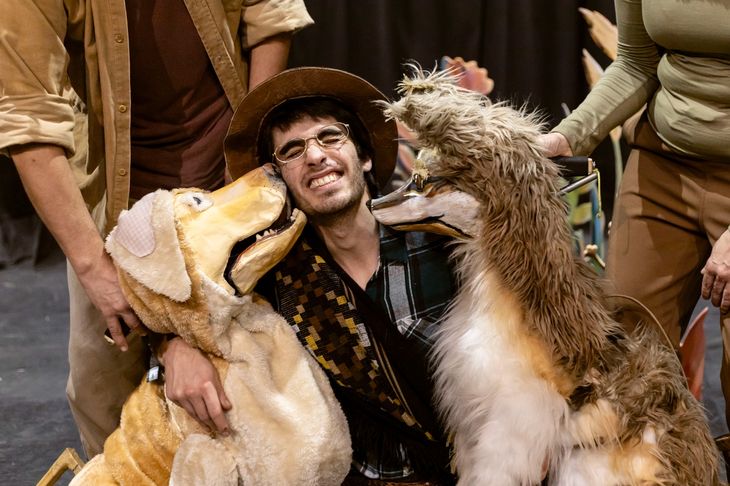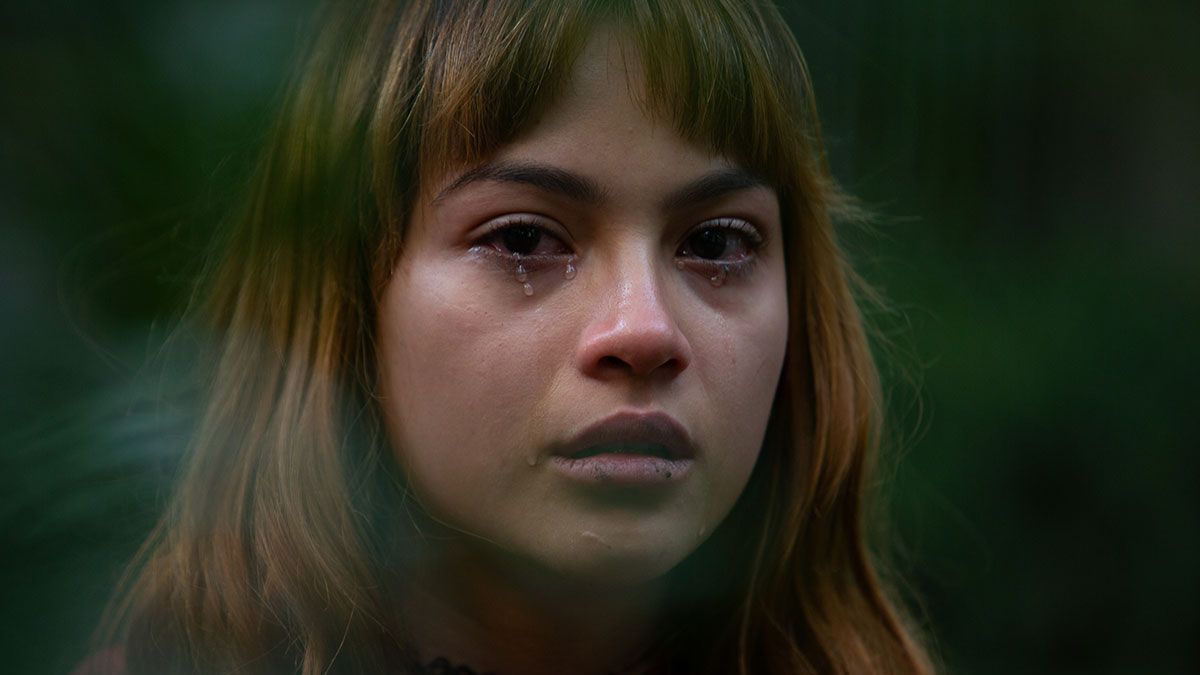“The puppet never goes out of fashion because it has to do with poetry, with childhood and that is why it competes with the large cell phone and 3D formats,” says Daniela Fiorentino, that together with Gerardo Porion They are the puppeteers of “The fox, the farmer and the good man”, of Pablo Gorlero.
“The children connect directly with the puppets, the adults resist,” reflect Porion. The play can be seen on Saturdays and Sundays at the Teatro del Pueblo and on holidays it will be on from Tuesday to Sunday.
It is a story about love, friendship and bonds that transcend the plane of life, for audiences from 4 to 100 years old. Fiorentino It’s the fox Porion the farmer, acts Santiago Lozano, like the good man, Pedro Raimondi plays the minstrel, the fox and the hare, while Ines Scepppacuercia will replace fox in winter holidays. The music is from Fernando Nazar and the choreography of Marina Svartzman. We talk with Fiorentino and Porion.
Journalist: How does the public receive this tender work of small format and few words in a world marked by the immediacy of the networks? What is the challenge?
Daniela Fiorentino: It is to continue betting on the traction of blood, as in the midst of the machinery and infinite technological structure a puppet continues to excite us, it tells us about the purest and most ancestral thing that a human being has, playing, as it was done in the caves. They are depositing in an object a living and real feeling that exists. As long as it is believed, it exists. The puppets are going to work because amazement and magic work. It cannot disappear even with the greatest technology on earth. If I put a puppet in the middle of the street, it surprises passers-by because it has to do with what is primary. It’s playing, two caps can be Romeo and Juliet. That is why we do not forget this stage of childhood. It is reaching the heart with few technological gadgets that go straight to the heart. It has to do with simplicity, there is a good niche there, simple stories are the most interesting.
Gerardo Porión: Everything is very influenced by social networks and it is not for nothing that the puppets have such a direct link with the children. It is not the audience I usually work for because I work with adults. In this work the audience is moved by the animals, they look realistic, there is a search for the animals’ attitudes to be able to tell an emotion. It is a work of few words but not on a large scale, puppets that take up a lot of space, we run from one end to the other, it is very interesting to work with actions and few words. The public sees things in the puppets that sometimes do not happen, they see them blink or smile because they imagine it.
IMG-20240615-WA0042.jpg
Journalist: What true story is this one about animals and a good man based on?
GP: It happened not long ago, during a pandemic, in Japan and he tells about a man who lived in the mountains with his dog and they adopted the fox.
DF: He is a wild fox, that’s why he also goes off to find his life, comes back and is not easily tamed.
Q: What is this work that combines puppets, actors and musicians like?
DF: He does a lot of work in crossing puppetry with different disciplines such as dance, digital art, acting. Here the ensemble is put together very well, also with a musician on stage and puppets that dialogue with each other. It is necessary to highlight how the actor feels that the puppets live, because if he looks at me the magic does not happen. There is also the troubadour who tells.
GP: It is a challenge. The puppeteers act on a musical score and, as you can see, there is very detailed work. We had as a reference the cartoons, Tom and Jerry, which have a musical score that marks the characters’ actions. First you have to assemble the written idea about the actions that the characters do and then improvise with the human. We created the scene, we assembled it with pins first to be able to visualize it, then the musician composed the melody and later the rehearsal with the actor.
Q: What is puppet theater like today? How are the puppeteers? Is there a puppet audience for adults?
DF: I am a puppet activist, I have a production company Casa de títeres that I founded in Pan y Arte. I trust in puppets for adults, I am preparing a puppet show for adults, with dance and flamenco, I always say they are not just for children and there are great proposals. I see puppet theater alive and for me it is an infinite art, it will never stop growing and existing, it is a niche that covers a large audience.
GP: I work with my show “Pajarraquito” at the Teatro La Gloria. Puppeteers and actors sometimes don’t mix much, there is a lot but separately, and the same with the theaters, some don’t program puppets and others do. We are looking to open new spaces. It is good to meet dancers, actors, musicians and puppets, all on stage in the same show.
FR__0123_1.jpg

Q: What is it like to do independent theatre today? How do you see culture and the theatre scene?
GP: It is not the best time but it works as a breeding ground for good dramas, productions and shows. It is a difficult time with few resources, the current spaces are dismantled but I feel that the theater is active and even more so in times of crisis.
DF: What we are experiencing is a disaster, an abandonment of culture, of support, there are no cultural policies, it is a Government that is not interested in culture. We do the best we can but I don’t see intelligence, an immersion in culture, much less in theater. It is very difficult for independent and commercial theater to sustain at this time, it is a constant and yet theater and culture are more alive than ever. When they want to push and destabilize the most, the artist stops working and walks because the amount of works there are, even for adults, is exciting. We lead a way of life as artists and the public supports us. There is a device, it is epic to do theater, it is a beautiful delirium.
Source: Ambito
I am an author and journalist who has worked in the entertainment industry for over a decade. I currently work as a news editor at a major news website, and my focus is on covering the latest trends in entertainment. I also write occasional pieces for other outlets, and have authored two books about the entertainment industry.




